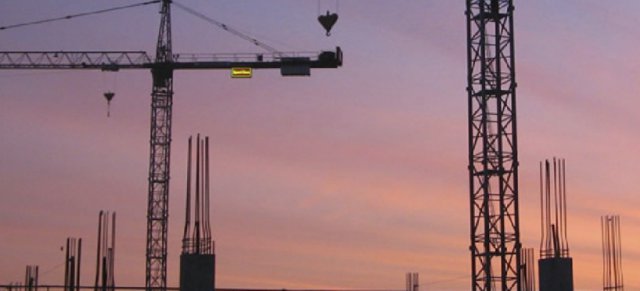 The talk of construction lately has been devices, which includes tablets, smartphones, and more. Now, there is another device flying—yes, flying—onto many construction jobsites, giving construction companies the opportunity to provide the owner with progress shots of the job – enter the ‘quadcopter.’
The talk of construction lately has been devices, which includes tablets, smartphones, and more. Now, there is another device flying—yes, flying—onto many construction jobsites, giving construction companies the opportunity to provide the owner with progress shots of the job – enter the ‘quadcopter.’
Richard Evans, IT Manager, SpawGlass, www.spawglass.com, San Antonio, Texas, has been interested in flying jet models as a hobby for years. As the technology continued to develop for these UAS, Evans began to consider how it might benefit SpawGlass.
“I initially got interested when they started developing the auto pilot technology for them. I have been looking at it for quite a while and about a year ago I started buying parts and assembling and putting one together,” he says. “Now, I have three of them. I found what was really interesting and fun for me was the video photography aspect and the still shots you can get.”
One of the primary uses for these devices in the construction industry is from a marketing and customer relations aspect, providing the owners with progress photos and videos of a job in a lot more detail.
What does the device entail? Primarily, the system is a camera mounted on a radio-controlled quadcopter, hexacopter, or octocopter, depending on the number of arms. The flying camera has a small board with auto pilot that includes a compass, GPS, an accelerometer, and a barometric altimeter. The miniaturization and mass production of the components incorporated into smartphones, including GPS, accelerometers, and more, is what has made robotic flying cameras for construction possible, according to Evans.
“It is using the GPS to lock into where it is at. If I just turned the radio off and it senses it lost its control link to me then what it will do is it will come back and land where it took off from and that is a very useful part of the technology,” Evans adds.
While the aircraft has auto pilot, the flyer still has a big role when operating the quadcopter. When flying the device, Evans wears goggles that have the video from the camera transmitted back to the goggles, allowing him to see from the eyes of the camera.
Evans builds the quadcopters himself, purchasing the motors, frame, batteries, and other components from different companies. Although, he adds in the last year more companies are beginning to offer nearly ready-to-fly kits, giving the user most of what is needed.
Owners are taking interest in this technology already. Case in point: the University of Texas, in Austin. When working on the Liberal Arts II building and the new Student Activity Center building, SpawGlass was invited to do a fly around with a UAS to get video and still pictures.
One of the challenges for this particular project was getting good aerials due to the crowded airspace. However, unlike a traditional helicopter service, a UAS is able to precisely control and safely obtain close-up stills and videos.
Since Evans was wearing the goggles when flying the copter, he had an assistant serve as a spotter to ensure the flying camera didn’t back up into a building or bystander. All in all, Evans was able to capture the video of the University of Texas in 10 minutes, providing video and pictures for the owners.
While using videos and stills for marketing purposes is the primary advantage, Evans does see the potential for other benefits down the road. It will be interesting to watch as the trend toward flying UAS continues to unfold in the construction industry.
Source: Construtech
